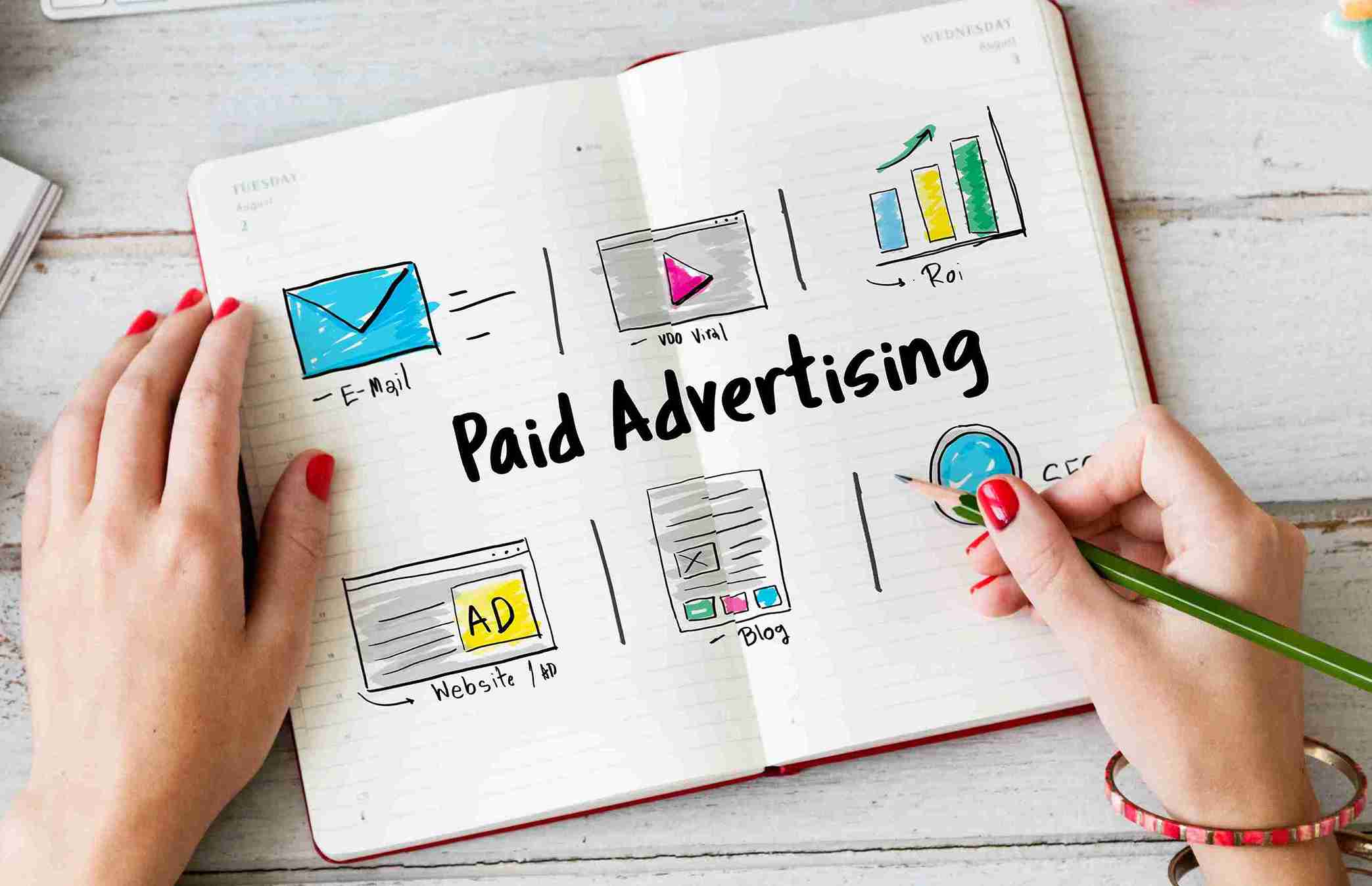 SHARE
SHARE
Advertising: Understand Its Purpose, Types, and Effective Ways to Attract Customers!
Sovia
Advertising is one of the most effective marketing strategies to capture customers' attention and boost sales. With increasing business competition, advertising is no longer just an option but a necessity.
However, how do you create advertising that is truly effective and not just a budget drain? Let’s find out here!
What Is Advertising?
Advertising is the art of attracting attention and building relationships with customers through persuasive messages. In the business world, advertising is not just about ads; it is a communication strategy designed to encourage the audience to take action.
This could mean increasing brand awareness, directing potential customers to your business, boosting sales of existing products, or introducing new services.
Amidst fierce competition, brands strive to create engaging and memorable advertising. The messages conveyed can be in the form of images, videos, or words designed to shape a positive perception of a product or service.
Advertising is the key to building long-term relationships with customers, not just grabbing momentary attention.
It may sound similar to marketing, but the two play different roles. Marketing encompasses a broad strategy to increase brand awareness and trust, while advertising is a part of that strategy focused on creating persuasive messages.
In other words, advertising is a powerful tool in executing a successful marketing strategy.
However, every business needs to understand that advertising expenses are an investment, not just a cost. Every dollar spent should generate impact, whether in the form of increased sales, customer loyalty, or brand awareness.
With the right strategy, advertising can drive sustainable business growth.
Read more: Examples of Successful Food Product Advertisements That Attract Buyers
Objectives of Advertising
Source: freepik.com
In a competitive business world, advertising is the key to attracting customer attention and building loyalty.
More than just showcasing a product, effective advertising informs, persuades, and reminds customers of a brand’s value. Here are some key objectives of advertising:
1. Providing Information
Advertising serves as a bridge between businesses and customers. Through ads, brands can convey important information such as product advantages, usage instructions, and exclusive promotions.
Advertising is a strategy that helps increase brand awareness, ensuring the business is well-known in the market.
However, information alone is not enough. To be effective, ads must be designed with engaging storytelling that is relevant to the audience.
This way, the brand message can be clearly communicated, fostering a deeper understanding and encouraging customers to take interest in the offered product or service.
2. Convincing Customers
More than just informing, advertising also aims to persuade customers to take certain actions, such as trying or buying a product. Advertising is a tool that builds trust and creates an emotional connection with the audience.
With the right approach, ads do more than just sell; they shape a strong and credible brand image.
For example, customer testimonials, case studies, or storytelling from real experiences can be effective ways to increase customer confidence in a brand.
3. Reinforcing Brand Awareness
Customers often need an extra push to make a decision. Therefore, one of the goals of advertising is to remind them about the brand and its product benefits.
Consistent advertising helps reinforce brand messages and keep businesses relevant in customers’ minds.
Advertising expenses should be managed wisely to ensure each campaign delivers maximum results. With repeated yet creative advertising strategies, brands can remain top-of-mind for customers and build long-term loyalty.
Types of Advertising
Advertising is a marketing strategy implemented through various media to reach the target audience. As technology and consumer habits evolve, different types of advertising have emerged and developed. Here are some common types of advertising:
1. Digital Advertising
In the digital era, marketing strategies increasingly focus on the online world. Digital advertising is a promotional method that uses digital platforms such as social media, websites, and search engines. This type of advertising is effective as it can reach a broader and more specific audience through data and algorithms.
For instance, a fashion brand can target ads only to users interested in the latest fashion trends. This ensures every advertising budget is used optimally, resulting in higher conversions.
2. Online Advertising
Online advertising is a subset of digital advertising that specifically utilizes the internet as its primary medium. This includes various formats, such as Google Ads, social media ads, and email marketing.
One of the advantages of online advertising is its ability to display relevant ads based on user behavior. This helps businesses build more personal relationships with potential customers.
3. Print Media Advertising
Although the digital world is growing rapidly, print media still holds a place in advertising strategies. Newspaper, magazine, brochure, or flyer ads are often used by local businesses to reach audiences in specific areas.
For example, a newly opened restaurant in a city can use brochures to attract nearby customers. Print media remains an option for businesses wanting to provide a physical experience to potential customers.
4. Television Advertising
Before the internet took over, television was the primary medium for advertising. Even today, many large companies still use it because TV has a wide reach and can create a strong emotional impact.
Television ads are often combined with digital strategies for optimal results. For example, a brand may run a TV campaign while encouraging audiences to seek more information through social media or its website.
5. Outdoor Advertising
Outdoor advertising is a marketing strategy targeting audiences while they are outside their homes. Examples include billboards on highways, posters at bus stops, and digital signage in shopping centers.
This type of advertising is effective for building brand awareness as it can reach many people in a short time. For example, a beverage brand might place billboards in strategic locations to attract the attention of drivers and pedestrians.
Tips for Effective Advertising
Advertising is not just about showcasing a product but also the art of telling a story that evokes emotions.
An effective ad builds connections with the audience, creates appeal, and drives action. Here are some effective advertising strategies:
1. Understand Consumer Emotions
Emotions are the main key to influencing purchasing decisions. Ads that evoke feelings—whether happiness, nostalgia, or excitement—are easier to remember and share.
Create a narrative that resonates with the audience’s lives so they feel personally connected to the brand.
2. Create a Memorable Ad Format
Memorable ads have distinctive elements that set them apart from competitors. Use catchy slogans, unique visuals, or engaging narratives to make them easy to remember. Avoid overly long or convoluted messages.
Consistency in tone, color, and visual style is also important to ensure the brand is easily recognizable.
3. Choose the Right Timing
Aligning ads with trends and market conditions can enhance their effectiveness. For instance, during a K-pop trend, brands can incorporate K-pop elements into their advertising strategies.
Understanding the right timing makes ads more relevant and increases their potential for virality.
4. Convey Information Clearly
Engaging ads must still deliver information clearly. Use easy-to-understand language and avoid ambiguity. If selling a product, include details such as composition, price, or key benefits.
Additionally, ensure contact information or links to the website are easily accessible so the audience can take immediate action.
5. Maximize Digital Platforms
The digital era offers many opportunities for brands to reach a wider audience. Use social media, marketplaces, and websites to expand ad reach.
You can also optimize digital marketing strategies, such as SEO and paid ads, to ensure more targeted advertising and maximum impact.
Read more: What is Digital Signage? These are the functions and benefits for your business
Conclusion
Advertising is a powerful tool for increasing business visibility and attracting new customers. With the right strategy, ads not only boost sales but also strengthen customer loyalty to the brand.
Maximize your culinary business advertising with ESB Loop! Easily manage promotions with an intuitive dashboard and Smart Campaign features, ensuring each promo effectively targets customer preferences.
Contact the ESB Team and consult your business now!
 SHARE
SHARE





